Canine Parvovirus
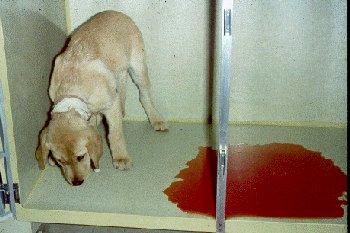
Canine Parvovirus is a viral disease that affects the dog's entire body, but especially the gastrointestinal tract. There are many, many dog ailments that attack the gastrointestinal tract.
Canine Parvovirus: The Virus
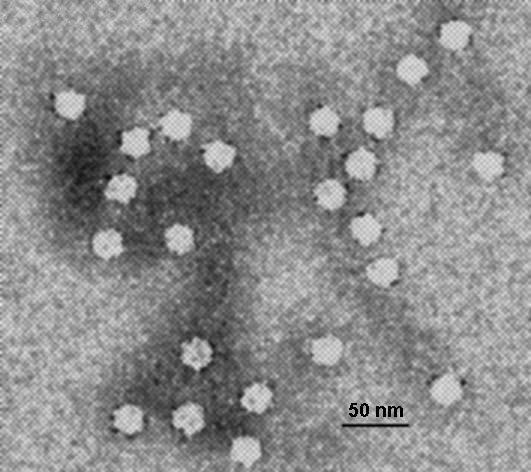
Every species has its own parvovirus that is specific to that species. The canine parvovirus is related to the Feline Panleukopenia Virus. It is perhaps a mutated version of the feline virus. The virus is hard to kill in the environment. This means that the virus is in the environment and the dog will probably be exposed to it.
Whether or not your dog gets sick depends on a number of factors:
- The condition of the dog: this includes overall health, if the dog was exposed previously to the virus and has a strong immunologic memory of it, if the dog is vaccinated.
- Viral issues such as the virulence of the viral strain, how many viral particles are in the area
- Environmental factors such as how much stress the dog is under, if the weather is cold or dry.
The incubation period is from 3 to 7 days. Incubation period is the time between when the dog is exposed to the virus and when symptoms develop. The virus attacks the lymph nodes in the neck first. Then the virus likes rapidly dividing cells such as bone marrow or intestines.
Cells that are part of the immune system are produced in the bone marrow. If the virus kills the bone marrow, that means that there are less cells to protect the dog. In the intestines, the virus wreaks havoc, resulting in the inability to absorb nutrients, diarrhea, nausea, blood loss in the diarrhea and the entrance of bacteria into the blood. Death is possible usually caused by severe dehydration or septic shock from the bacteria in the blood.
Canine Parvovirus Symptoms
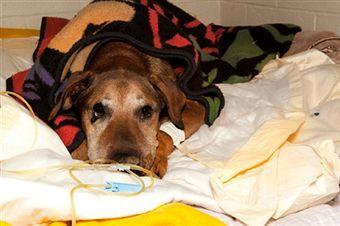
Parvovirus in dogs is diagnosed by symptoms and signs as well as lab tests. Canine Parvovirus symptoms include diarrhoea, lethargy, depression, no appetite, high fever, vomiting and nausea. There may be blood in the diarrhoea. Routine blood analysis test can show a decreased white blood cell count.
Canine Parvovirus Treatment
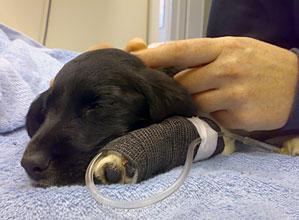
The dog should be checked in to the local veterinarian's clinic or animal hospital. Treatment includes intravenous fluids and nutrients and antibiotics. Food and water are withheld in order to give the gastrointestinal tract time to recuperate. Medication to control vomiting and or nausea is administered to make the dog more comfortable. Blood transfusions may be necessary depending on how much blood the dog lost.
Prevention of Parvovirus in Dogs
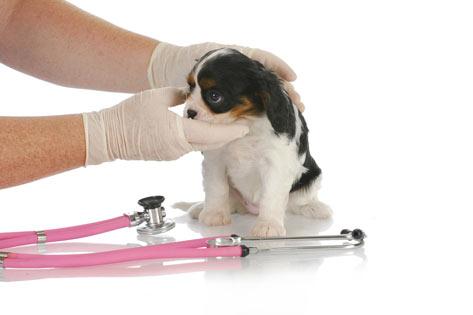
There is a vaccine for Canine Parvovirus and vaccination is effective. If you want to learn more about vaccines and vaccination, ask a vet or you can look online for vet advice. There are many online sites where you can ask a vet for free information. If your dog does develop this disease, the area where your dog lived should be disinfected with a bleach solution and you should wait to get another dog or puppy for awhile.
- Can Dogs Get Distemper If They’ve Been Vaccinated?
By Ruthie Bently Pet owners are required to get their cats and dogs vaccinated against the rabies disease, and there are other vaccinations our pets get depending on their owner’s preference and veterinarian’s recommendations. The distemper vaccination...
- Dog Flu Symptoms
Canine influenza or dog flu is caused by the influenza virus A, which is known as H3N8. It is an airborne virus and hence, usually gets transmitted by coughing or sneezing. This highly contagious dog flu virus can also spread through direct contact...
- Bloody Diarrhea In Dogs
Presence of trace amount of blood in a dog's stool is quite normal. However, if your pet dog is suffering from diarrhea and the stool contains blood in large amounts, then you need to take the matter seriously to save his health. There can be...
- Dog Cold Symptoms
During winter or summer, you may find your dog sneezing. This makes you wonder if dogs can get cold? Yes, they do get colds after the temperature drops or due to seasonal allergies caused by pollens in air. There are many other factors that lead...
- Canine Anemia
Anemia can be defined as a lack or deficiency of red blood cells or hemoglobin, which is the hemoprotein responsible for binding with oxygen, and then transporting it to every cell of the body. Like humans, a dog can also have anemia. In humans,...
